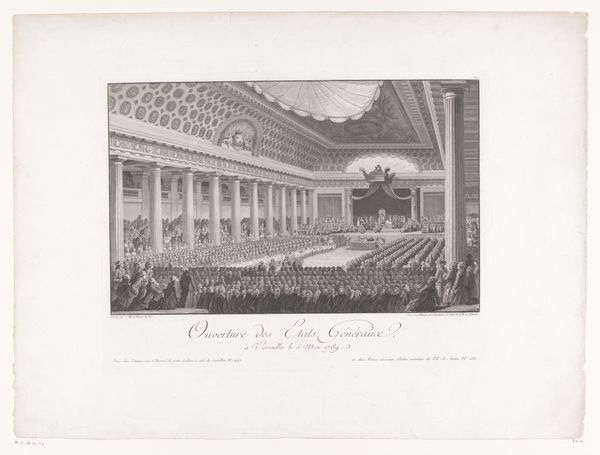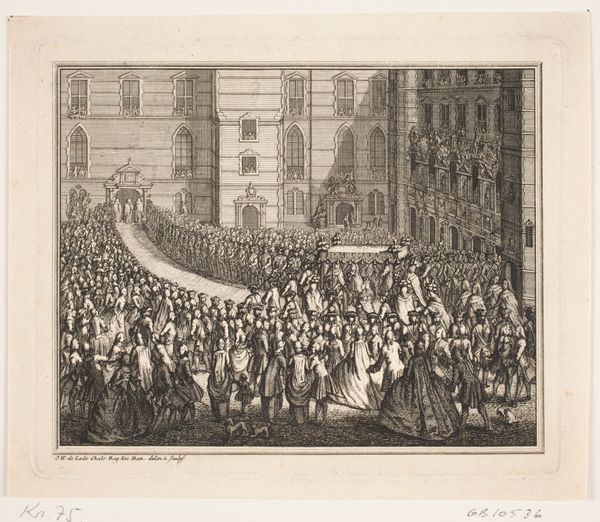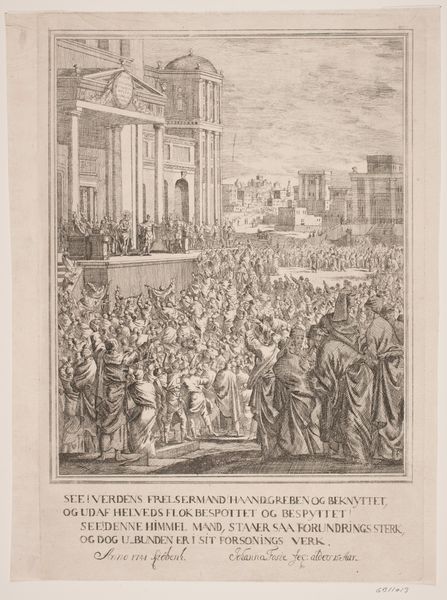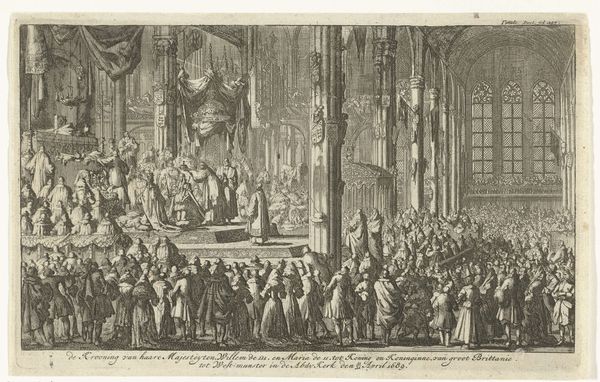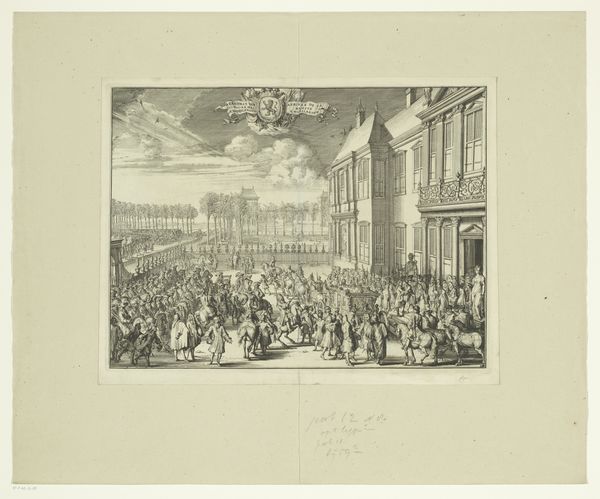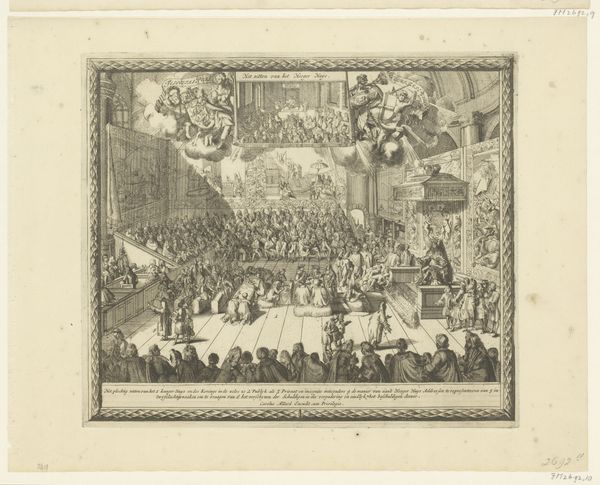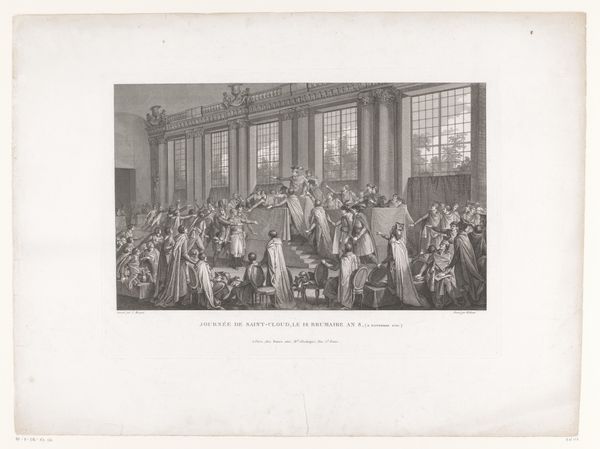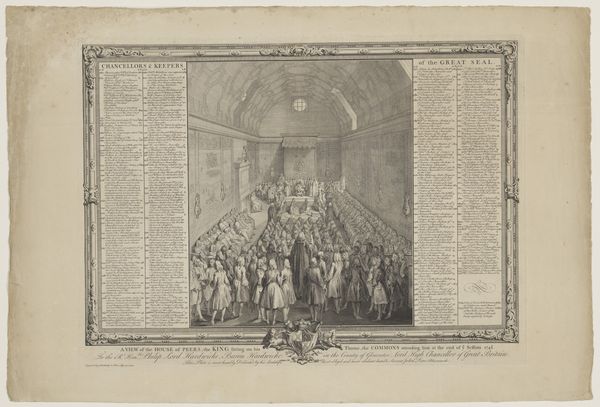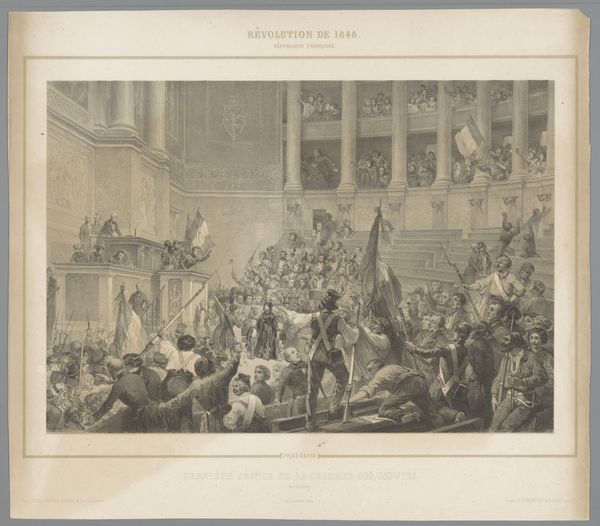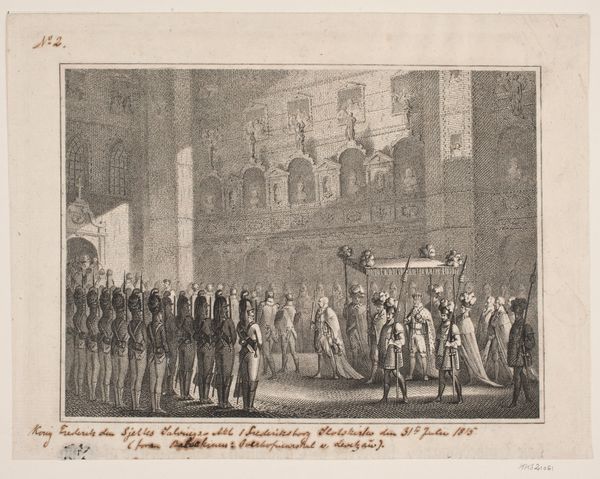
Onthoofding van Jean-Bertrand Féraud tijdens de opstand van 20 mei 1795 tegen de Nationale Conventie Possibly 1796 - 1799
0:00
0:00
isidorestanislashelman
Rijksmuseum
print, engraving
#
neoclacissism
#
aged paper
#
narrative-art
# print
#
light coloured
#
old engraving style
#
personal sketchbook
#
history-painting
#
academic-art
#
engraving
Dimensions: height 360 mm, width 472 mm
Copyright: Rijks Museum: Open Domain
Editor: This engraving, possibly from between 1796 and 1799, depicts "The Beheading of Jean-Bertrand Féraud during the uprising of 20 May 1795 against the National Convention" by Isidore-Stanislas Helman. The scene is chaotic and crowded. It feels like a raw and brutal moment captured. What kind of historical context informs your understanding of this image? Curator: This print offers us a chilling glimpse into the French Revolution, doesn't it? It freezes a moment of intense political turmoil and violence. The National Convention was itself a site of incredible conflict. Seeing Féraud’s execution visualized through this neoclassical lens… well, it's impossible to ignore the power dynamics at play here. Who had the power to represent the narrative, and whose voices were suppressed in the process? Consider the image's Neoclassical style; what purpose might this choice of style have served in representing such a barbaric act? Editor: It's almost like the clean lines of Neoclassicism are trying to impose order on a fundamentally disordered event. Did the artist have a political agenda? Curator: That's a great observation. Indeed, Helman was working in a politically charged environment, and images like these played a crucial role in shaping public opinion and justifying political actions. Visual representations, particularly those circulated widely through prints, had an impact on constructing collective memory. We must consider, also, whose stories are deemed worthy of artistic representation. How might this image perpetuate or challenge existing social inequalities of the time? Editor: So, it’s not just a historical record, but a constructed narrative embedded within a specific socio-political context. I hadn’t thought about the way Neoclassicism itself becomes a political statement here. Curator: Exactly. And remember, art doesn't exist in a vacuum. Analyzing art from this period compels us to investigate broader cultural narratives that touch upon revolution, justice, and the fragility of political structures. I'm so glad you raised this artwork as a perfect example. Editor: I learned that examining it through a historical lens illuminates not only the event itself but also the way power dynamics influence its artistic representation.
Comments
No comments
Be the first to comment and join the conversation on the ultimate creative platform.

